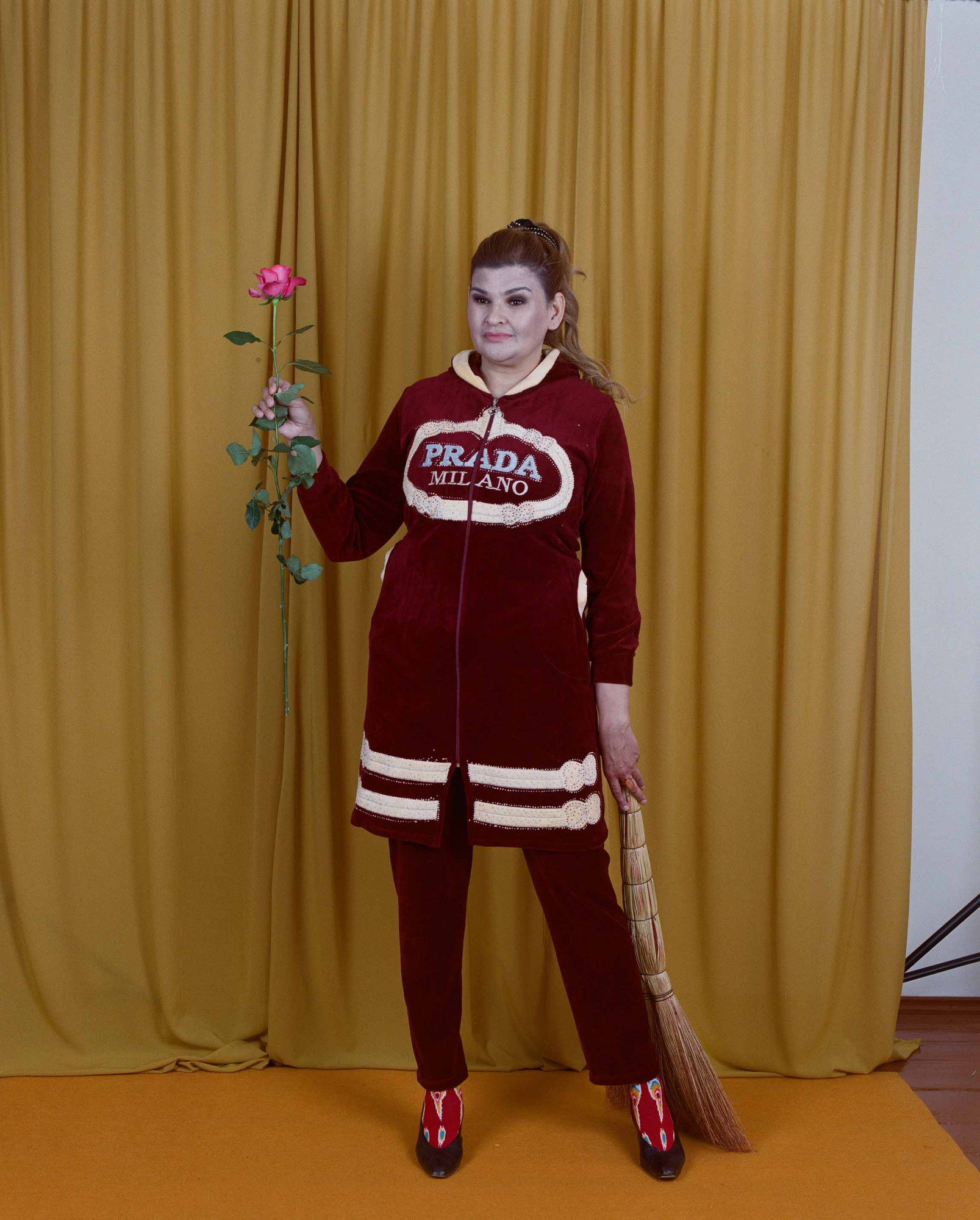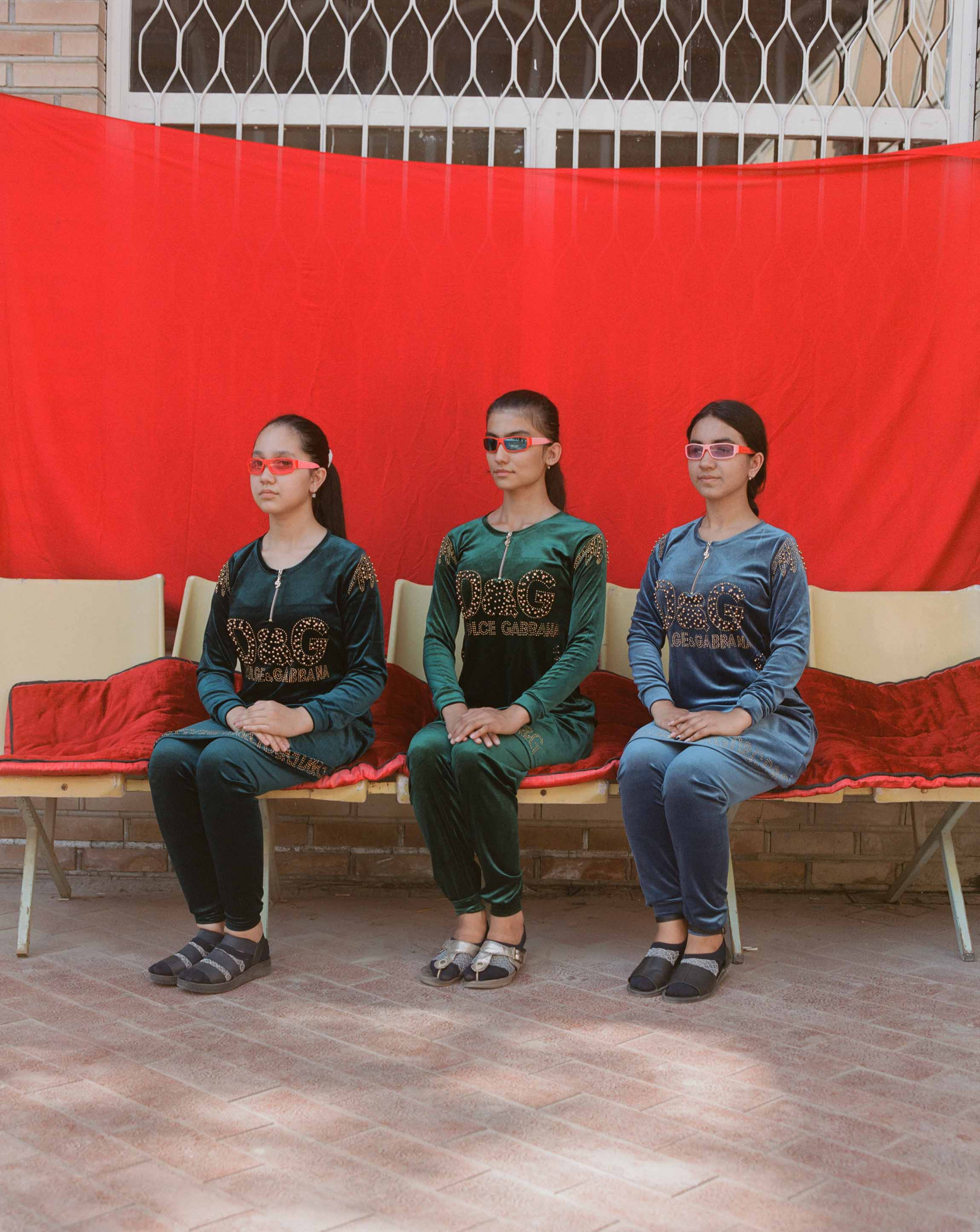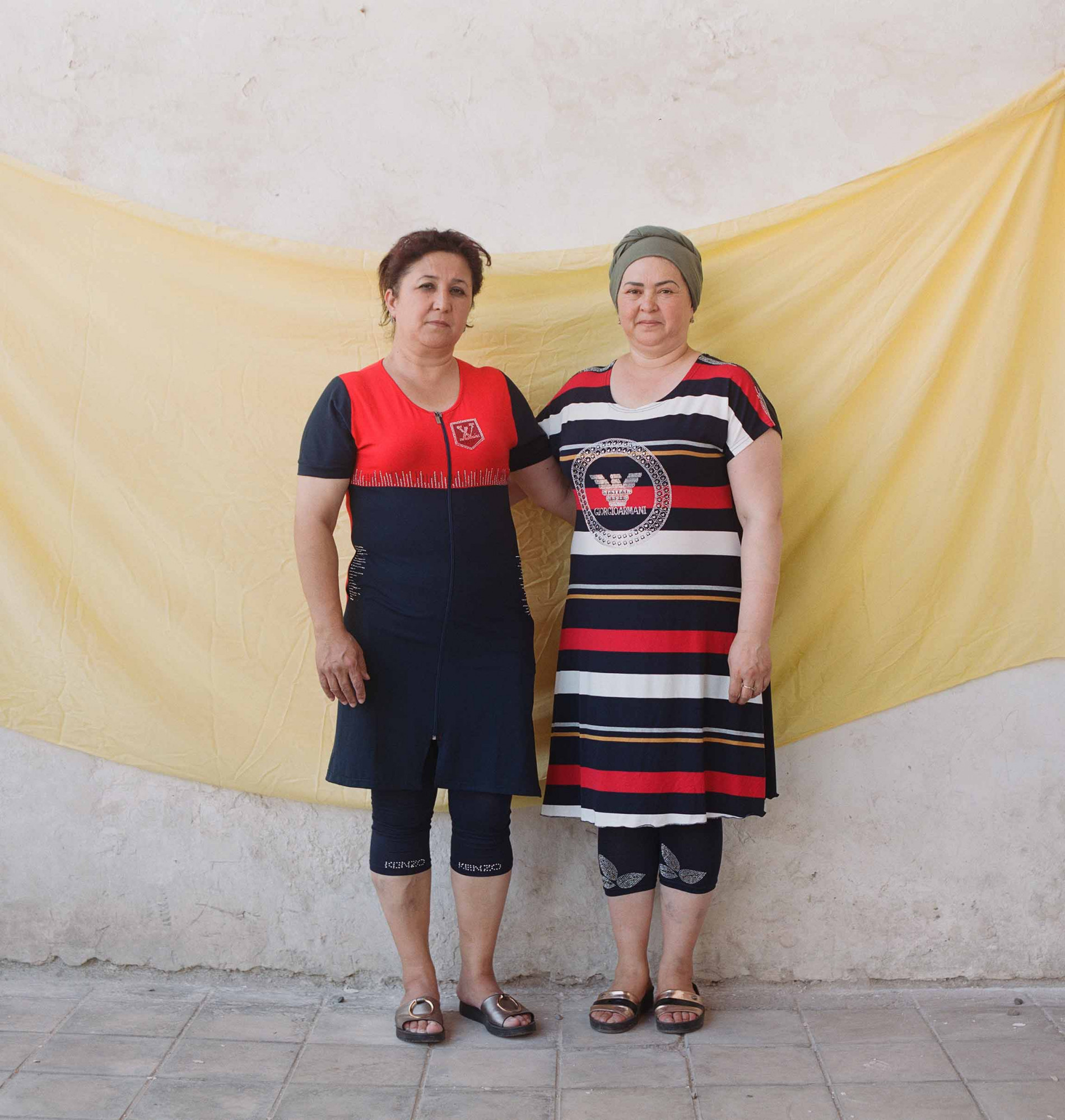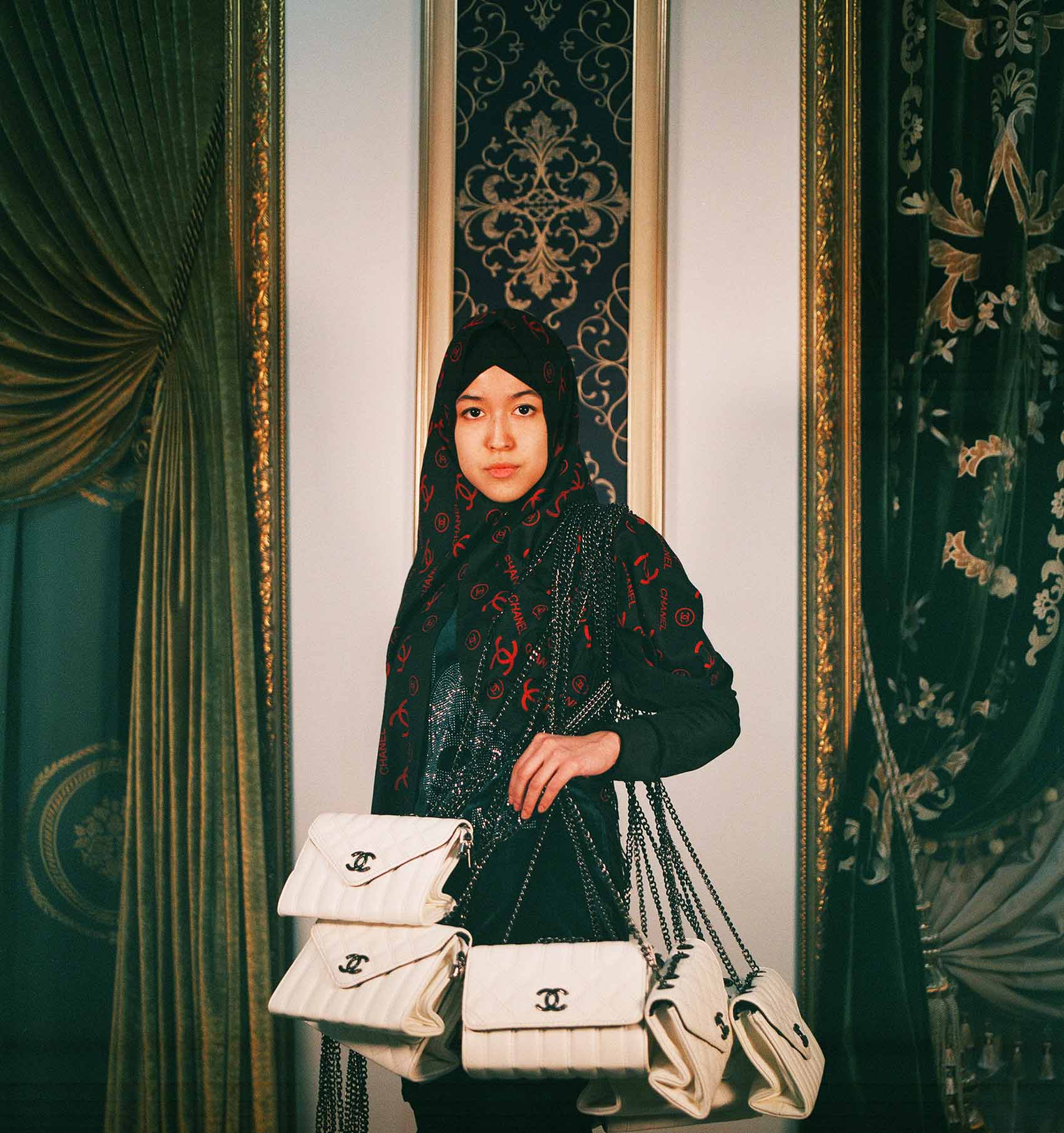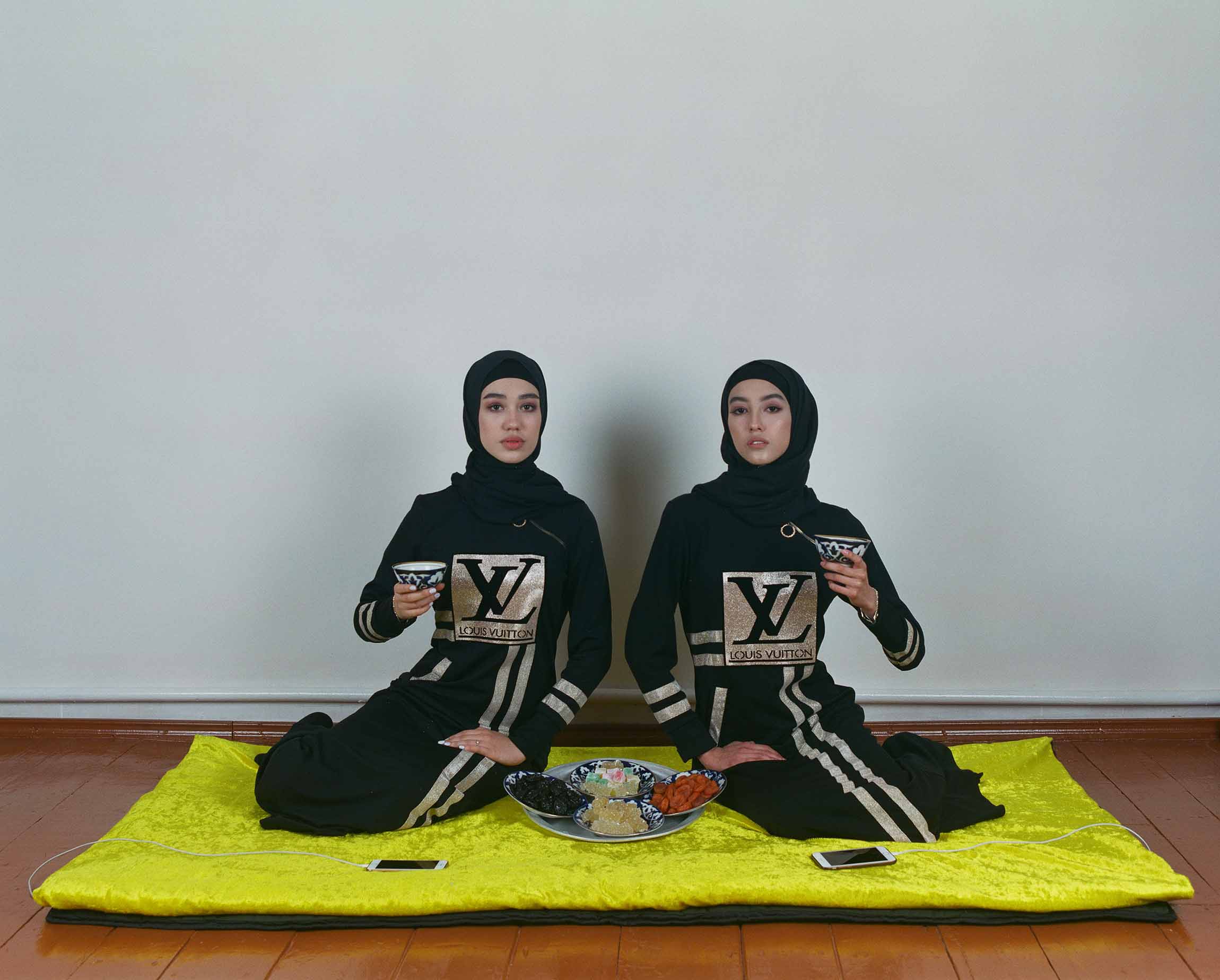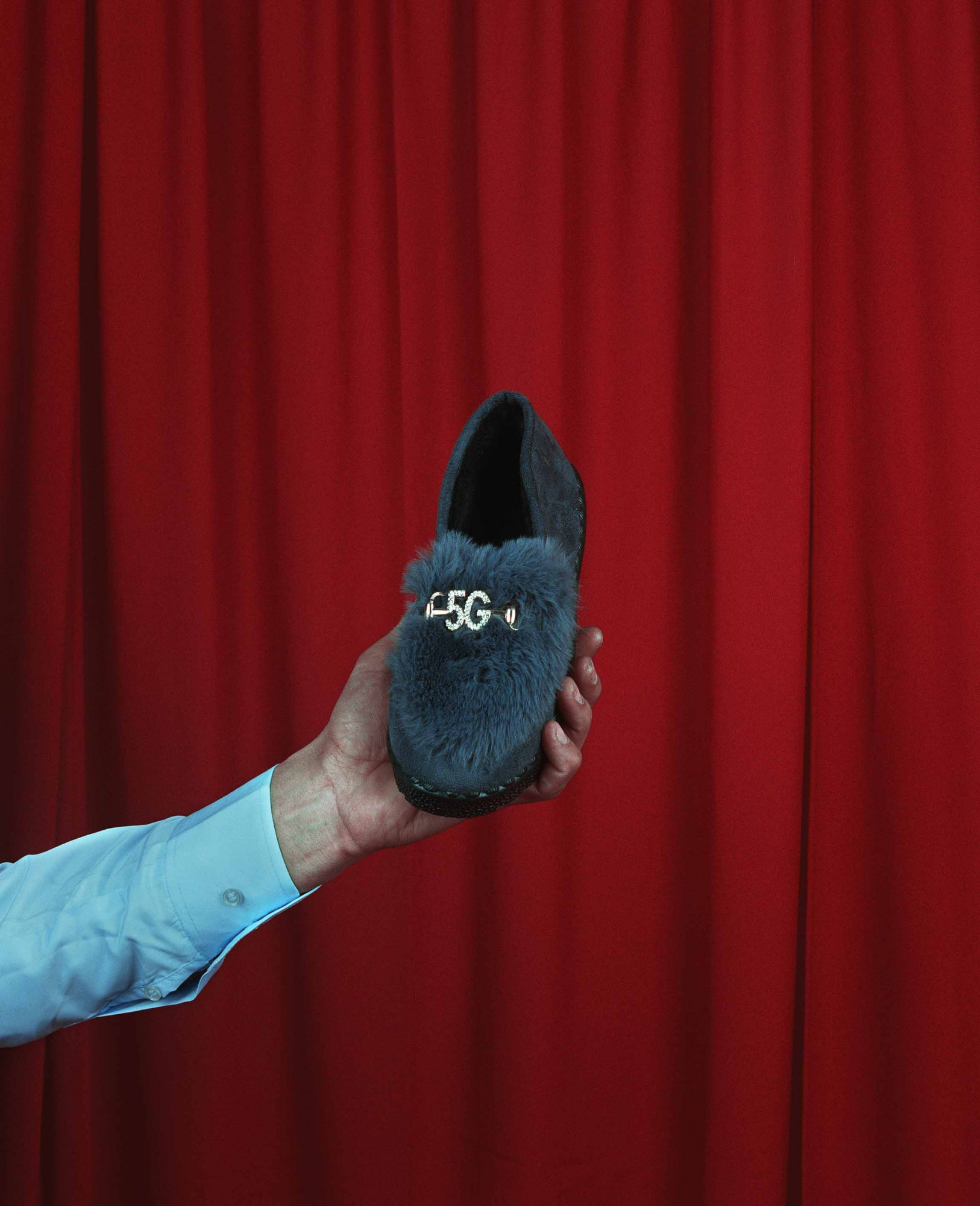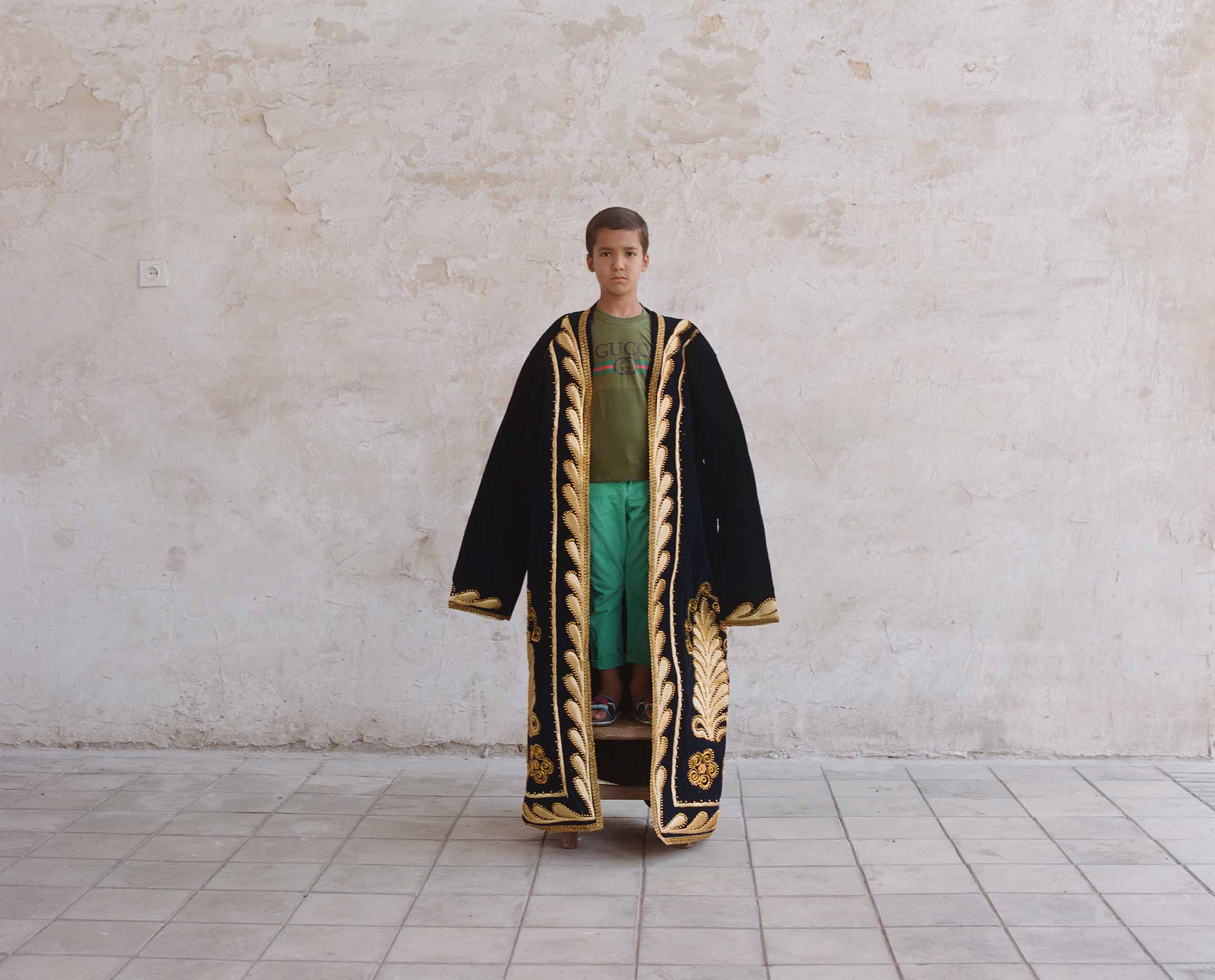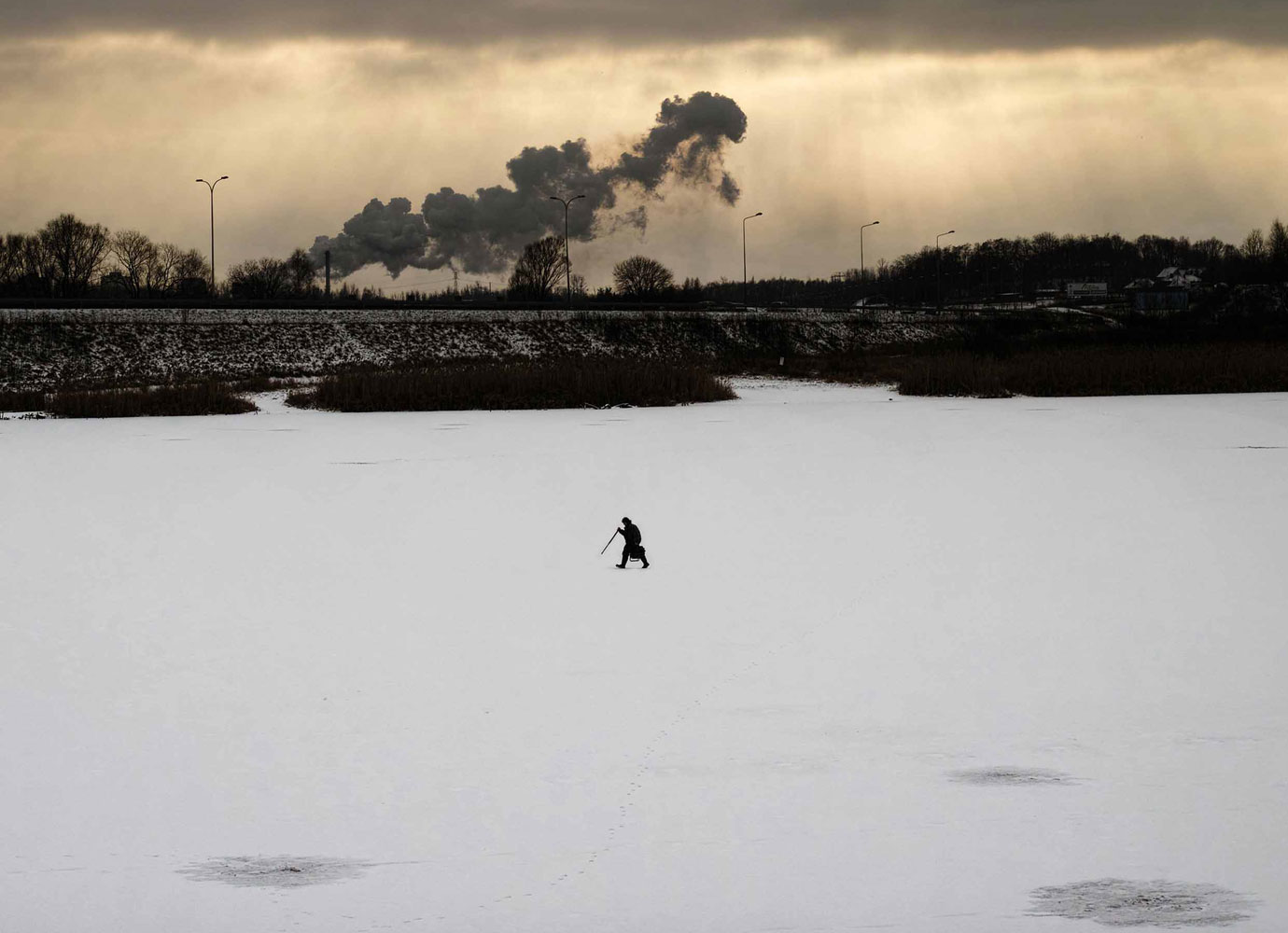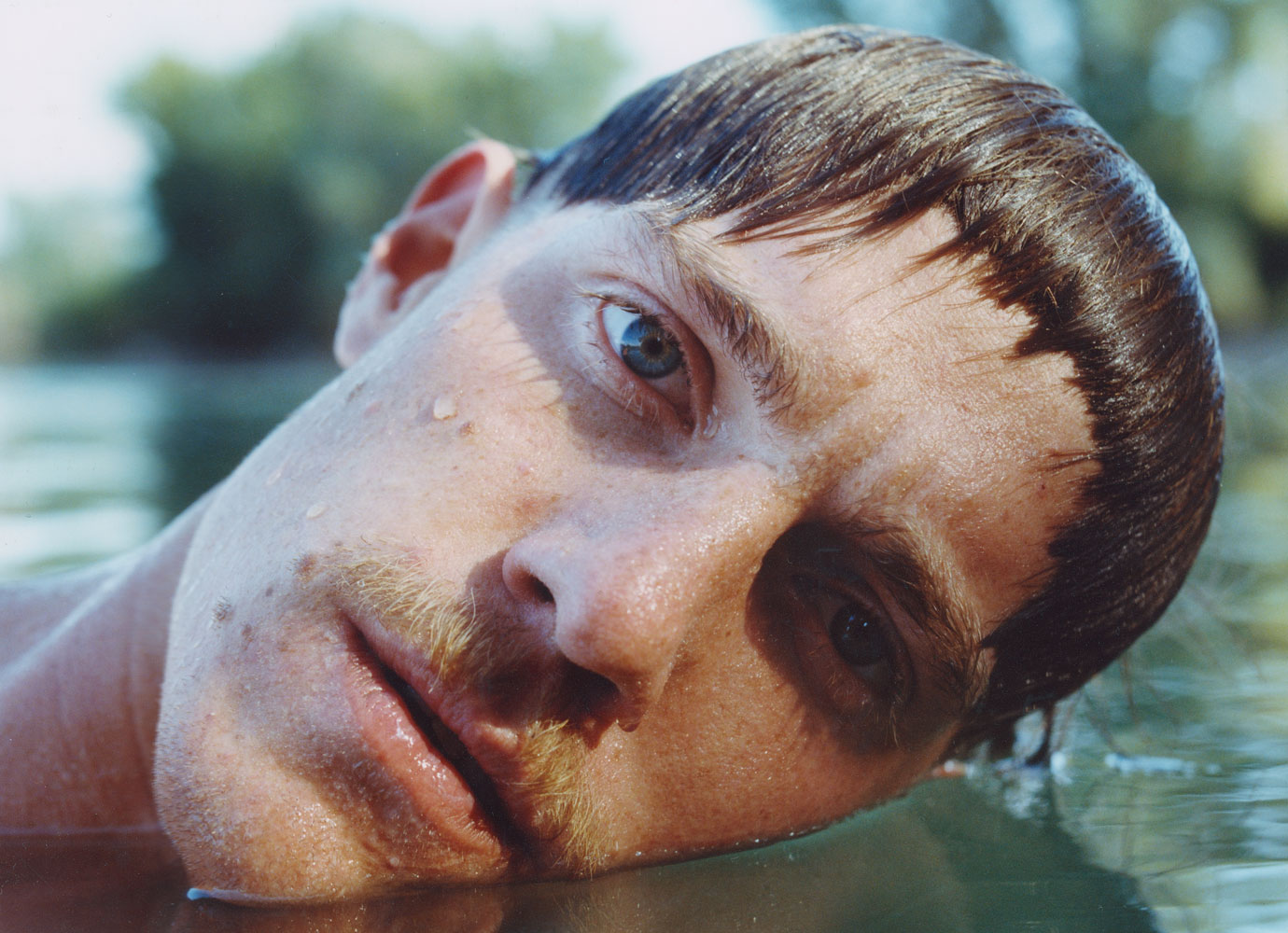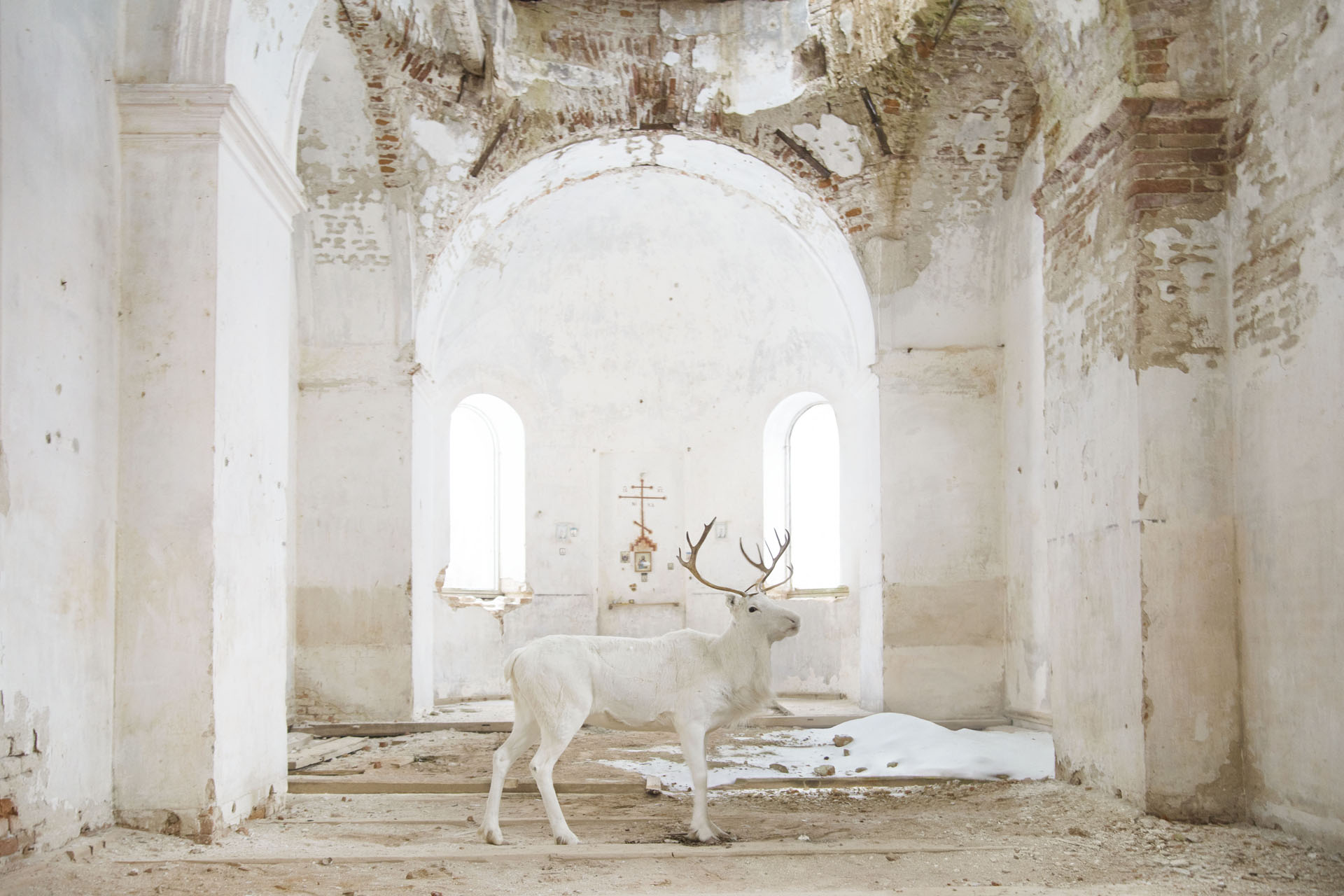Logomania: a photo project explores what’s behind Uzbekistan’s obsession with Western luxury
To capture his native Uzbekistan, Tashkent-born Hassan Kurbanbaev began with the most popular stop for tourists and photographers visiting the historic Silk Road towns of Samarkand and Bukhara — the bazaar. He travelled to markets across his country, making sketches, buying props, and street casting models of all ages. Only, instead of indulging us with images of colourful spices, silk-embroidered tapestries, and clay urns, he dedicates his series to the visual rhythms of monogrammed knock-offs: Chanel bags, Gucci t-shirts, even diamanté encrusted “5G” shoes.
“The purpose of my series was not to show that fakes are everywhere in Uzbekistan. They can be found in many countries around the world,” says Kurbanbaev, who approaches counterfeit products with a playful inquisitiveness in his witty project Logomania : Owning The World at Half Price. “I was more interested in showing an obsession with blindly replicating Western fashion logos on clothing or household items.”
Uzbekistan’s love affair with logos began — as with other Soviet countries — in the 90s, when foreign-branded goods entered the country for the very first time. Back then, the photographer reflects, nobody cared whether the Adidas sliders they were wearing were original or counterfeit: “We were happy with any good clothes, especially if they had a cool logo on them.” Three decades since Uzbekistan’s independence, Western luxury — whether real or fake — has been ingrained in local culture. The photographer sees what he calls “a crisis of self-identification” in home decor too, where Western logos grace everything from soaps to showerheads, and in architecture, pointing to facades and restaurant interiors, made to look like European landmarks such as the Palace of Versailles.
“I recently saw the film Crazy Rich Asians, and it reminded me of my own culture. Except, if in Singapore they can really afford to buy something expensive, we are happy with a copy,” he adds. But Logomania is not wholly about consumerism — what Kurbanbaev explores is cultural identity at large.
In 2017, we published Kurbanbaev’s photos of Tashkent’s youth, a born-digital generation that, compared to their predecessors, has grown up with Western music, films, brands, and feels equally connected to global trends as it does to Uzbek culture. The photographer himself was raised in this atmosphere of change, and his projects explore this blending of Western and Uzbek influences as a source of creative freedom. But Logomania asks, what happens when the concept of luxury itself is blurry; when young people across the world strive for Instagram-perfect lives that aren’t real to start with?
Shooting a portrait of modern Uzbekistan through the lens of Western brands might seem audacious, especially when it is a country that is barely known beyond its Silk Road legacy. Still, how many projects about Uzbekistan show the real pulse of the country? In Kurbanbaev’s view, so many stories about Uzbekistan only scratch the surface of people’s lives today. He frequently sees photographers invading people’s personal space, something he calls unnecessary, explaining that “you can tell a multi-faceted story through very simple observations.”
Logomania delves into the absurd and superficial, but it explores the consequences of Uzbekistan’s cultural obsession with imitating Western luxury: “How can Western media provide any representation or any references of Uzbekistan, if the country does not have enough knowledge about itself?” More could be done to encourage contemporary culture, develop Uzbek cinema, art, and photography, he argues. In many ways, Uzbekistan is moving in that direction.
“Before the death of Islam Karimov in 2016 [who ruled Uzbekistan with an iron fist for 25 years], the police would stop you if they saw you with a camera. They would interrogate you, as though you were the enemy.” This past week, Kurbanbaev launched his first solo exhibition at the 139 Documentary Centre, a newly-opened photography gallery in his hometown of Tashkent. He says the country is changing rapidly. As he explains: “Today is one of the most exciting times to travel around Uzbekistan to take pictures. It’s opened up many perspectives and opportunities for independent photography.”
His first foray into photography was spent studying the landscapes that were familiar and ordinary to him. He started by noticing small details: the rugs hanging like installations in his neighbourhood, people going quietly about their day. Over time, his work has evolved into a portrait of Uzbekistan. “Despite the fact that now I look at these photos and do not see anything special,” Kurbanbaev says of his early documentary series, “They helped me return to the profession and gave me strength.”
